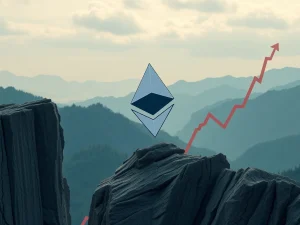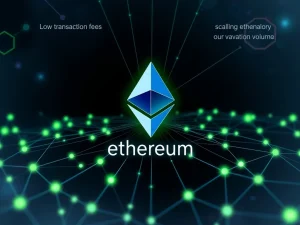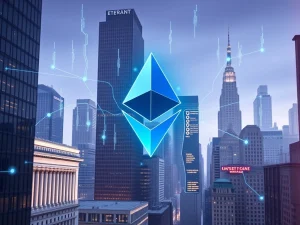Ethereum L2: Avail Exec Reveals Surprising Strength in Scaling Approach

Are you following the ongoing debate about how Ethereum is growing? The network’s strategy of relying heavily on Layer 2 solutions has sparked discussion. While critics point to challenges, one executive highlights an underappreciated benefit. Let’s dive into the surprising strength of the Ethereum L2 approach.
Understanding the Ethereum L2 Strategy
Ethereum’s chosen path for expansion isn’t about making the base layer handle everything. Instead, it focuses on offloading transactions to specialized Layer 2 networks, often called rollups. Anurag Arjun, co-founder of Avail, a chain abstraction solution, points out something unique about this setup:
- Each Layer 2 network can have different technical parameters.
- This includes varying transaction processing speeds and block times.
- This flexibility allows for a diverse ecosystem of execution environments.
Arjun believes this ‘rollup-centric roadmap’ is a significant advantage, fostering innovation across multiple teams.
Creating Many High Throughput Chains
Unlike monolithic blockchains aiming for one super-fast chain, Ethereum’s L2 approach allows for the emergence of numerous distinct chains. Arjun argues this creates a potentially unlimited number of unique High Throughput Chains.
This diversity means different L2s can be optimized for specific use cases, whether it’s DeFi, NFTs, or gaming, each operating with its own efficiency and cost structure. It’s a different model compared to competitors, offering a wide array of specialized environments rather than a single, uniform architecture.
What Are the Challenges for Ethereum Scaling?
While the potential for diverse, high-throughput chains is clear, challenges remain. A significant hurdle for Ethereum Scaling through L2s is interoperability. Arjun notes that without true cross-L2 communication, moving assets or data between different Layer 2s can feel as complex as bridging between entirely separate blockchain ecosystems. This fragmentation is a point critics often raise, arguing it silos liquidity and user activity.
Why Have Ethereum Fees Been Low?
Adding to the conversation, recent data shows a significant drop in base layer Ethereum Fees. In April 2025, average transaction fees hit around $0.16, reaching five-year lows. Santiment’s marketing director, Brian Quinlivan, linked this fee reduction to decreased demand on the mainnet.
Lower fees can be seen as positive for users, making transactions cheaper. However, they can also signal reduced activity on the base layer, which some interpret as waning interest.
Connecting Fees to Network Activity
The reduction in Network Activity on the Ethereum base layer, as indicated by lower fees, corresponds with fewer direct ETH transfers and smart contract interactions on Layer 1. This includes less activity in areas like decentralized finance and NFTs directly on the mainnet.
Quinlivan’s analysis suggests this trend indicates reduced retail interest. This shift has reportedly led some institutional investors to adjust their Ether holdings and price outlooks, raising questions about the base layer’s current utility compared to its scaling layers.
Conclusion: A Diverse Future?
Ethereum’s L2 strategy presents a trade-off. While it fosters a diverse ecosystem of potentially high-throughput chains, as highlighted by Avail’s co-founder, it also faces challenges like interoperability and the potential for base layer activity to decrease as users move to L2s. The recent drop in Ethereum fees and associated network activity underscores this dynamic. Ultimately, the success of Ethereum’s scaling hinges on overcoming these hurdles and demonstrating that a network of many specialized chains is more powerful than a single monolithic one.









